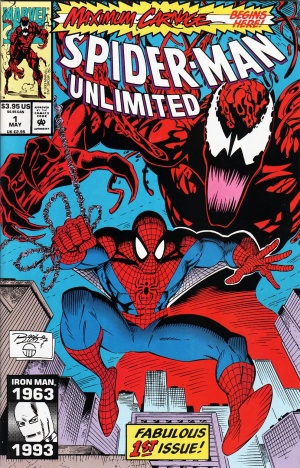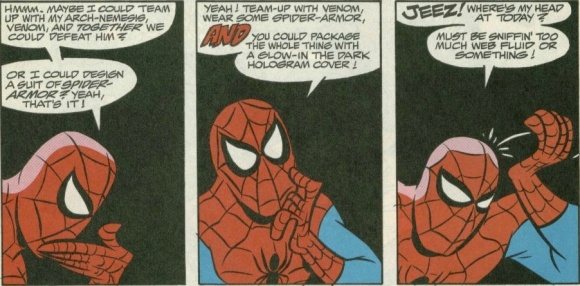
Villains Reborn Part 1: Masters of Deception
December 29th, 2011 Posted by GavokIn the prologue, I discussed the initial appearances of the Thunderbolts and the big hook of the series: a bunch of villains are pretending to be heroes in an attempt to exploit the world’s trust for personal gain. Months ago, I tried to get a friend of mine to read the series, but he’s a DC guy and was reluctant because he didn’t know any of the characters. Hell, I didn’t know any of the characters either! I mean, sure, I had heard of the Beetle before, but I only knew these characters as “those guys who became Thunderbolts.” Regardless, I figure now would be a good time to briefly go over our starting six main characters.

BARON ZEMO/CITIZEN V
Helmut Zemo
Helmut is the son of Heinrich, the Nazi supervillain who got the credit for Bucky Barnes’ death back in World War II. The news of Captain America returning, as well as the death of his father caused Helmut to seek revenge. At first he went with his own gimmick, calling himself the Phoenix. Cap handed him his ass and knocked him in a vat of Adhesive X, which scarred up his face something fierce. He’s since returned again and again as Baron Zemo, always aligning himself with fellow villains in hope of sticking it to Captain America. His claim to fame is the time he led the Masters of Evil into overtaking Avengers Mansion, where he had Jarvis tortured and messed with Cap by destroying his old pre-freeze belongings.
Zemo has no powers, but is an expert swordman and something of a scientific and tactical genius.
Baron Zemo is driven by his thirst for world domination and the belief that he is superior due to being a Zemo. Different writers seem to have different takes on how much he takes after his father. Can he be described as a Nazi or just the son of a Nazi? Does he feel that he’s superior because he’s Aryan or strictly because of his bloodline? Even a recent issue of Thunderbolts delves into this with Jeff Parker suggesting the latter. Personally, I like to just think of him as being a straight-up Nazi who likes to use people who he feels are inferior. It adds more emphasis to a lot of his later moments, from the subtle (the end of Thunderbolts #100) to the not-so-subtle (the last issue of Zemo: Born Better). I’ll get to those far down the line.

MOONSTONE/METEORITE
Karla Sofen
Karla was the daughter of a butler who worked for a rich family. While living at the mansion, she became best friends with the family’s daughter, exploiting her for her wealth. After her father’s death, she was removed from the cushy mansion life and her mother worked to the bone to keep them afloat. Karla was disgusted by her mother’s behavior and swore never to slave for the good of someone else. She became a talented psychiatrist and moonlighted with some bad people, ultimately leading her to convince the supervillain Moonstone to hand over the Kree artifact (the Moonstone) that gave him his powers. As the new Moonstone, Karla antagonized the likes of the Hulk and the Avengers.
Oh, and going by Brian Reed’s run of Ms. Marvel, she murdered her mother and convinced some of her patients to kill themselves. A little overboard for her depiction? Possibly, though Busiek has her doing some shady actions that land near that level.
As Moonstone, Karla is able to fly, has super-strength and can phase through walls. When using her Meteorite guise, she uses that last power at a minimum so as not allow anyone to figure out her identity. Her manipulation skills are so top tier that even Loki’s like, “DAMN!”
Moonstone is driven by selfish comfort. She’s the kind of person who would pretend to be lifting her corner of the couch while you end up putting in the brunt of the effort.


